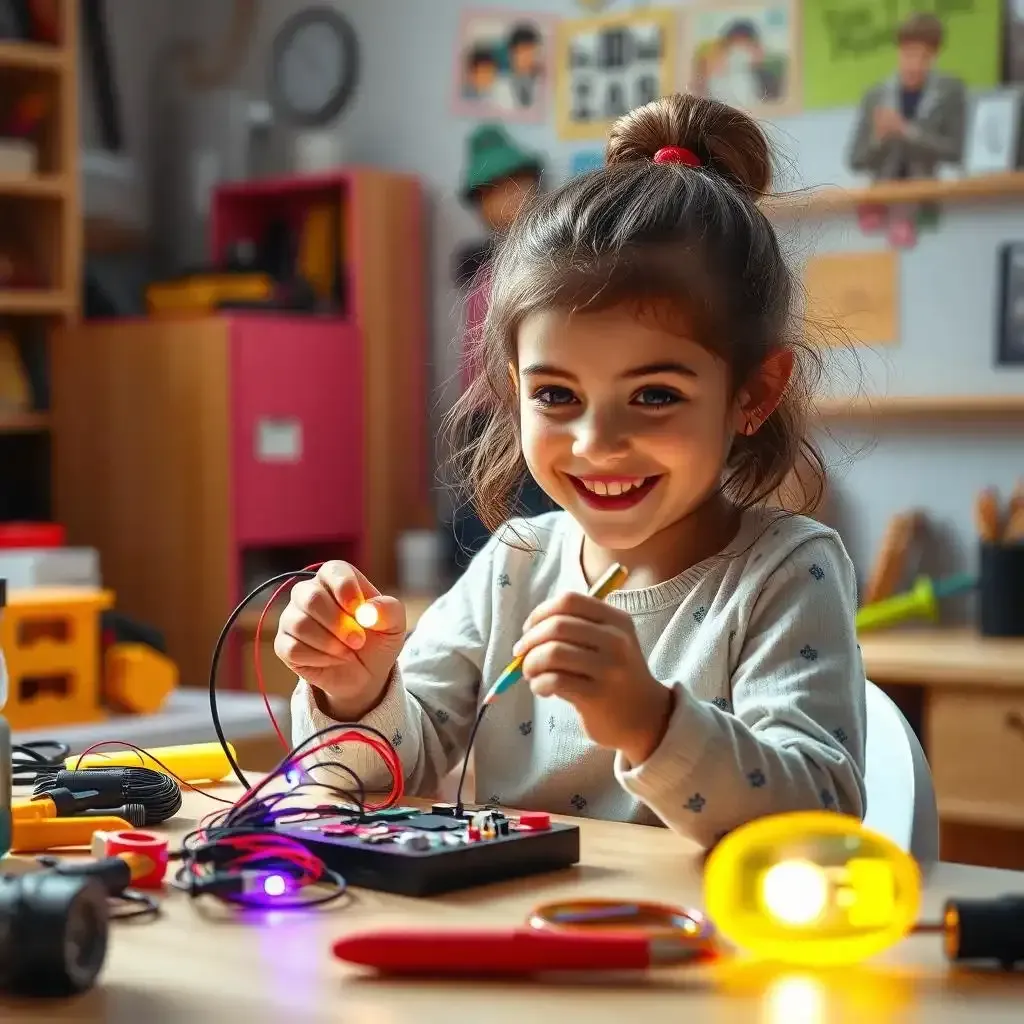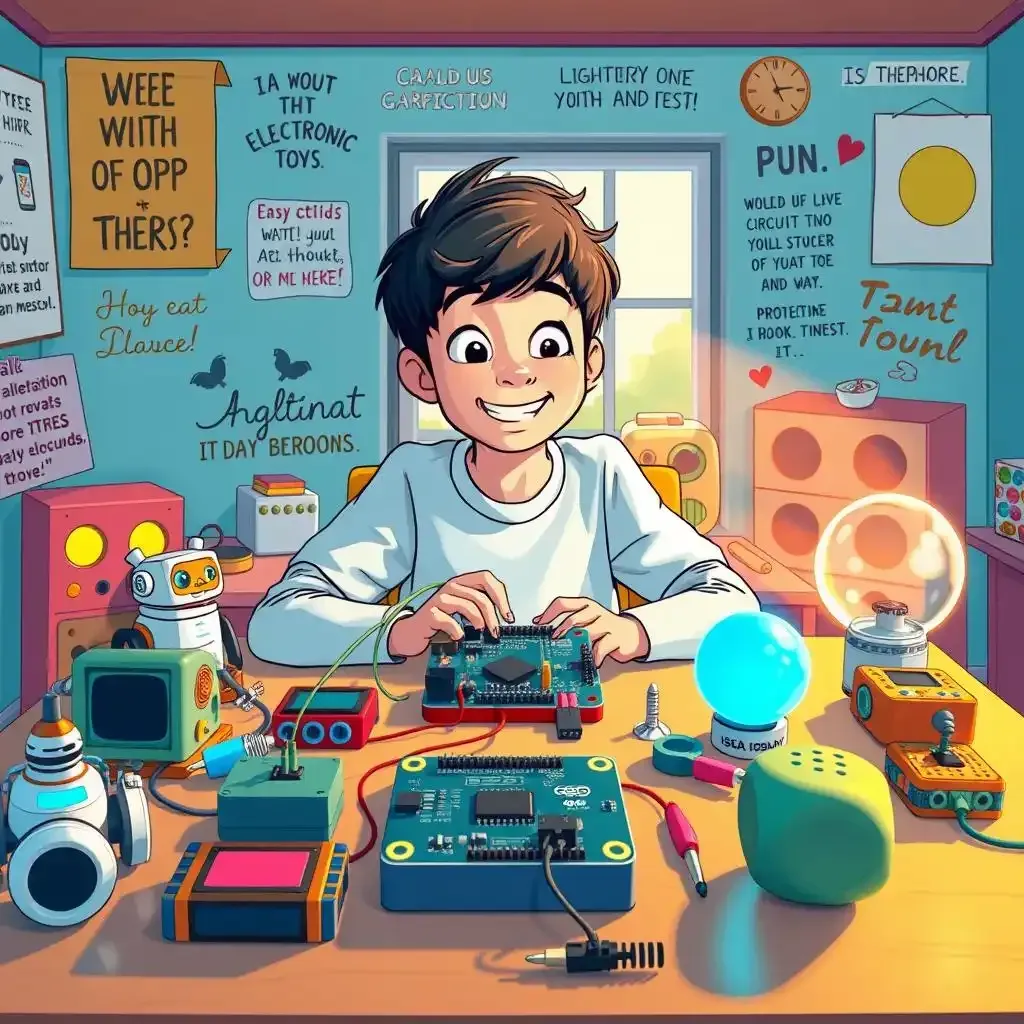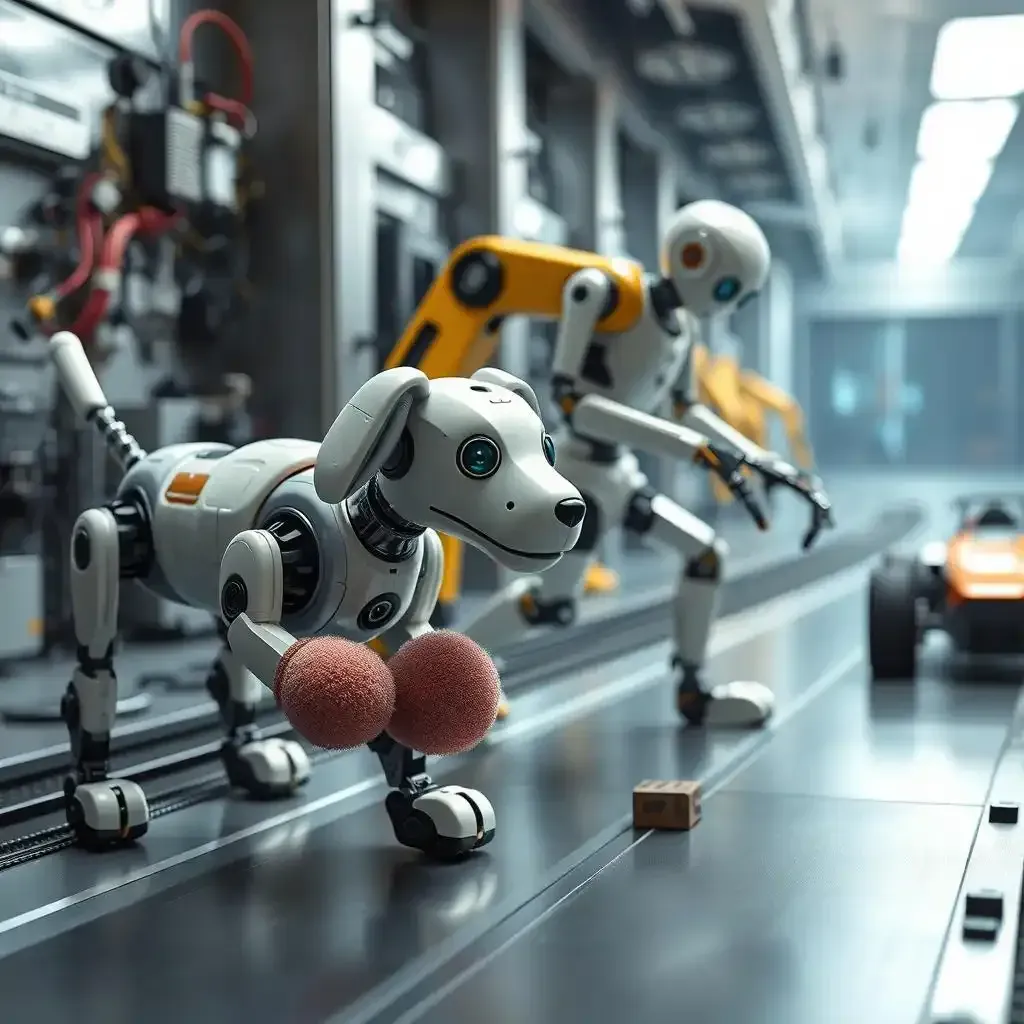Table of Contents
Ever wished you could build your own awesome electronic toys? At kittentoyland.org, we believe creating is half the fun! This article is your guide to the exciting world of DIY electronic toys. Whether you're a seasoned tinkerer or a complete beginner, we've got projects perfect for you. We'll show you how to make simple circuits that light up, beep, buzz, and even move! You'll learn about amazing tools like Arduino, find easy-to-follow tutorials, and find inspiration for your next creation. Get ready to transform everyday objects into interactive, personalized electronic toys! We'll explore projects suitable for all skill levels, from building a basic LED circuit to crafting more complex gadgets using pre-made kits or the powerful Arduino platform. So, grab your soldering iron (or maybe just some conductive tape!), and let's investigate into the electrifying world of DIY electronic toys!
DIY Electronic Toys for Kids: Simple Circuits and Big Fun

Diy Electronic Toys For Kids Simple Circuits And Big Fun
Sparking Curiosity: Simple LED Circuits
Hey there, future engineers! Let's start with something super easy and super cool: a simple LED circuit. Think of an LED as a tiny lightbulb that only works with electricity flowing one way – like a one-way street for electrons! You'll need a battery (a small 3V battery is perfect), an LED (make sure you get one that's designed for low voltage), and some wires. Connect the positive (+) side of the battery to the longer leg of the LED (it's usually a bit longer, like a little antenna), and the negative (-) side of the battery to the shorter leg. Boom! Instant light! It's like magic, but it's actually science! It's so satisfying to see that little light glow – it's your first step into the amazing world of electronics! Want to learn more about making your own amazing toys? Check out our guide on DIY cat toys for some extra inspiration.
Sound Effects: Buzzers and Beepers
Now, let's add some sound! Buzzers and beepers are like tiny speakers that make fun noises. You can find these little guys at most electronics stores. They're super easy to hook up to a battery like the LED. Just connect the positive and negative leads to the appropriate terminals on the buzzer. You'll hear a satisfying buzz – it's like your toy just spoke! You can use these buzzers to make your toys more interactive. Imagine a toy that buzzes when you press a button, or a robot that beeps when it moves! It's so much fun to experiment and see what you can create! For even more ideas, check out our post on toys with sounds to get some more ideas.
Component | What it does | Where to find it |
|---|---|---|
Battery | Provides capability | Electronics stores, online |
LED | Makes light | Electronics stores, online |
Buzzer | Makes sound | Electronics stores, online |
Beyond the Basics: Adding Switches and More
Want to make your DIY electronic toys even more awesome? Let's add a switch! A switch lets you turn your creation on and off, adding an extra layer of control. It’s like a gatekeeper for the electricity, letting it flow only when you want it to. This is super easy to add to your circuit and you'll probably find it fun too! It's like giving your toy a personality! You can also experiment with different types of LEDs, like ones that change color! The possibilities are endless! Don't be afraid to experiment; the best inventions often come from happy accidents! You can uncover more ideas on interactive toys to get more ideas. And remember, safety first! Always have an adult help you with the soldering and wiring.
- Start simple: LEDs and buzzers are great starting points.
- Experiment: Try different components and see what happens!
- Have fun! This is all about creativity and exploration.
Amazing Arduino Projects: Bringing DIY Electronic Toys to Life

Amazing Arduino Projects Bringing Diy Electronic Toys To Life
Arduino: Your Tiny Toy-Building Buddy
Okay, so you've made some simple circuits. That’s awesome! But now it’s time to meet Arduino, my personal favorite. Imagine Arduino as a super tiny, super smart computer brain that you can program to do all sorts of amazing things. It’s like giving your toys superpowers! You can tell it to make lights blink in crazy patterns, make sounds that'll make you giggle, or even control motors to make your creations move. It's like having a little robot helper that does exactly what you want it to do. Seriously, it’s that cool. My first Arduino project was a little robot that followed a line – it was kinda wobbly, but I was so proud! Want to learn more about making simple and fun toys? Check out our guide on .
Bringing Your Toys to Life: Simple Arduino Projects
Let’s build a light-up toy! You can use an Arduino to control multiple LEDs, making them flash, pulse, or even create a cool light show. Think of it as a miniature disco ball for your toy! Or, how about a toy that makes different sounds when you press different buttons? You can use Arduino to connect buttons to a buzzer or speaker, creating a musical instrument or a fun sound effect machine. It’s like composing your own tiny symphony! To get even more inspired, check out our post on for additional ideas. Remember, it's all about trial and error. Don't worry about messing up – that’s how you learn!
Project | What you need | How cool is it? |
|---|---|---|
Blinking LED | Arduino, LED, resistor, wires | Pretty cool! |
Sound-activated toy | Arduino, microphone, speaker, wires | Super cool! |
Level Up: Adding Sensors and Motors
Want to make your Arduino projects even more advanced? Add sensors! Sensors are like the eyes and ears of your creations. You can use a light sensor to make a toy react to darkness, or a touch sensor to make it respond to being touched. Imagine a toy that only lights up when it’s dark, or one that plays music when you pet it! It’s like adding real-world reactions to your toys. You can also add motors to make things move! Tiny motors can make your creations dance, wiggle, or even roll around. Think tiny robots, moving arms, or even a little car that you can control! Want to find out more about interactive toys? Check out our article on . Don't be afraid to get creative and try new things – that’s where the real fun begins!
- Start with simple projects and gradually increase complexity.
- Use online tutorials and communities for support.
- Most importantly, have fun and let your imagination run wild!
Advanced DIY Electronic Toys: Stepping Up Your Game

Advanced Diy Electronic Toys Stepping Up Your Game
Okay, so you've built some awesome LED light shows and maybe even a robot that beeps when you tickle it. That's fantastic! But now let's get REALLY creative. Think bigger, think bolder, think... robot dog that fetches your slippers! (Okay, maybe not *that* advanced yet, but we can get close!). It's time to explore more complex components and learn about programming in more detail. We're talking about adding sensors, motors, and microcontrollers that'll make your toys truly interactive and mind-blowingly cool.
Imagine a toy that follows you around the room using sensors. Or a robotic arm that can pick up tiny objects, like a miniature construction crane. Or maybe a toy that reacts to your voice commands. Pretty amazing, right? To help you on your progression, check out our guide on DIY interactive toys for more inspiration. These projects might seem tricky at first, but trust me, they're totally doable with a bit of patience and some helpful online tutorials. Remember that first wobbly robot I built? It was super satisfying, even though it sometimes went off course! Learning from your mistakes is part of the trip.
Component | What it does | How awesome is it? |
|---|---|---|
Ultrasonic Sensor | Measures distance | Super cool! |
Servo Motor | Precisely controls movement | Mind-blowing! |
Microcontroller (like an Arduino) | The brain of your project | Essential! |
Want to build a robot that navigates a maze? That’s a super fun challenge. You'll need a microcontroller, motors, and sensors to help it "see" the walls and find its way. It's like a tiny, robotic explorer! Remember to use our local toy safety tips to make sure everything is safe. Another cool project is creating a remote-controlled robot car. You can use a radio controller to send signals to your Arduino, which then controls the car's motors. It's like building your own miniature race car! And don't forget to check out remote control toys for some extra ideas. These projects will seriously level up your skills. Don't be afraid to ask for help from adults and use online resources. You got this!
- Don't be scared of complex projects. Break them down into smaller steps.
- Use online tutorials and forums – there are tons of helpful people out there.
- Celebrate your successes, no matter how small they might seem.
Final Thought
Building your own DIY electronic toys is a fantastic progression of learning and creativity. It’s a chance to explore the wonders of electronics, let loose your imagination, and create unique gifts or simply enjoy the satisfaction of bringing your own inventions to life. Remember, the best projects are the ones you design yourself, so don't be afraid to experiment, make mistakes (they're part of the fun!), and most importantly, have fun! Happy building from the team at kittentoyland.org!